Are you ready to journey across time through the chronicles of Montana’s history? Don’t go anywhere as this literary “time machine” takes you to the most historic destinations in the state!
There is a wealth of history to unpack for Montana’s longest-standing towns and cities.
Take, for example, Montana’s magnificent Fort Benton and the charming Deer Lodge. These hidden gems are brimming with tales of pioneers, Native Americans, and the birth of a nation.
Aside from uncovering hidden historical treasures of a bygone era of fur trading and indigenous tribes, learning about Montana’s oldest settlements also gives you a look into the past of the greater United States.
As we explore Montana’s oldest towns and cities, we’ll take a deeper dive into their historical and cultural significance to the state.
If you’re a history buff yearning to unearth hidden treasures and hear fascinating tales about Montana, this article was written just for you!
- Related article: Montana Before Statehood
Without further ado, let’s go on a journey through time, uncovering the fascinating past of the Treasure State, one historic settlement at a time.
City vs Town: A Comparative Breakdown
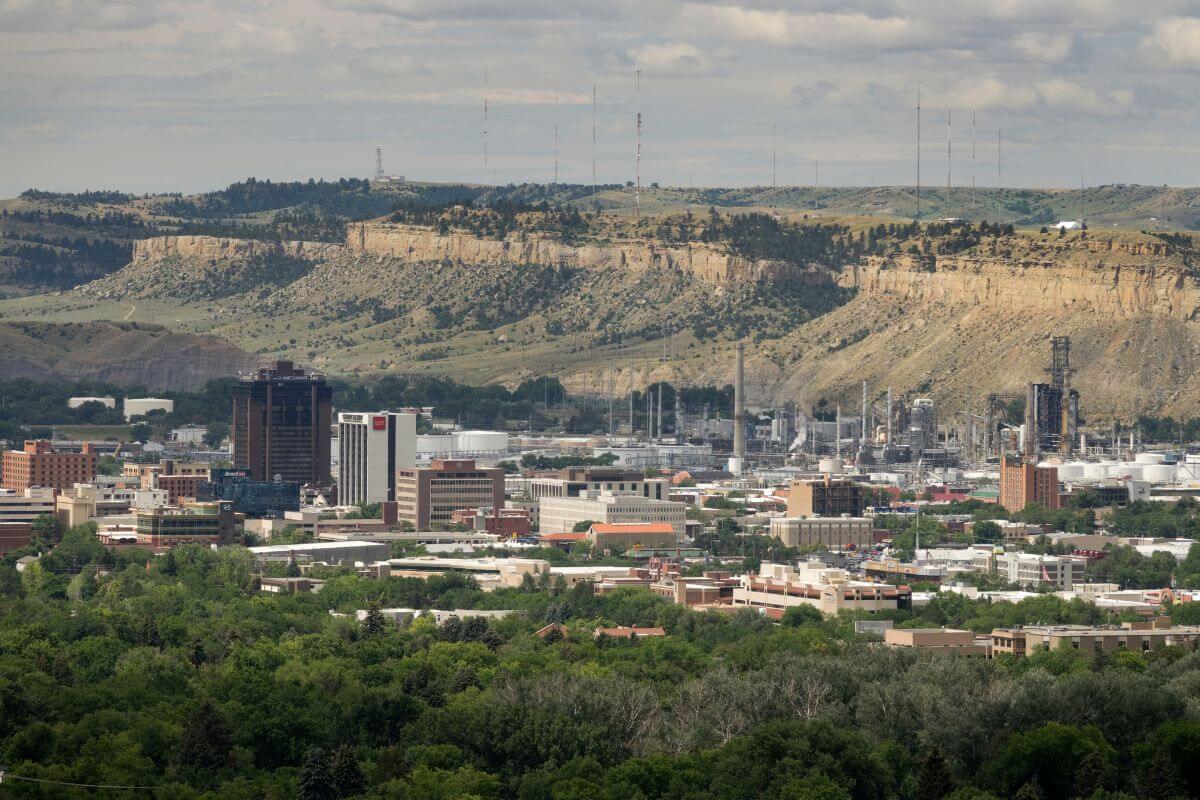
Before we get to the main order of business, however, let’s differentiate “town” and “city” to ensure the accurate designation of each Montana settlement discussed below.
| Key Comparison Points | City | Town |
| Size and Population | Generally, a larger land area Focus is on urban development | Typically fewer residents—more intimate community setting |
| Legal Status | A higher degree of autonomy—granted municipal codes or charters | Less power and responsibilities |
| Economic Activities | All-around economic hub | Economic activities are often limited to specific industries, such as agriculture, mining, and tourism |
| Cultural and Social Characteristics | A more diverse culture and a wider range of artistic, entertainment, and culinary options | Tends to be more traditional, sticking to their roots instead of embracing popular culture |
| Infrastructure and Services | Typically offers a wide assortment of services and more advanced and extensive infrastructure | Limited services and fewer and less advanced infrastructure |
While comparing towns and cities can be summed up based on these criteria, it’s important to keep in mind that each city and town is unique and there may be exceptions to the rule.
The Importance of Exploring Montana’s Oldest Settlements
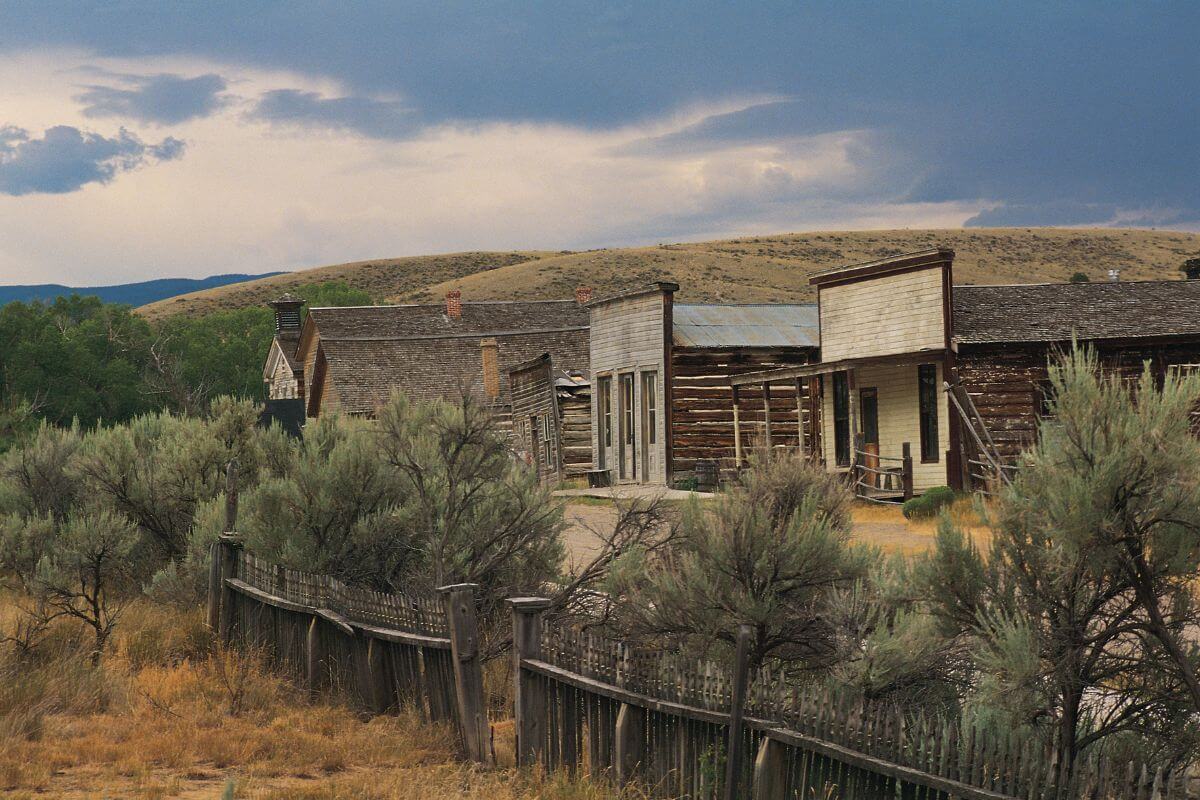
Montana’s oldest settlements are, indeed, captivating. These historic towns and cities are a treasure trove of fascinating tales and historic structures that speak to the state’s rich cultural and architectural heritage.
As we set out on a journey to uncover Montana’s past, these cities and towns provide us a glimpse of old Montana, a representation of its early residents, and a chance to look into developing communities in the region.
Exploring Montana’s timeless settlements is not just about unlocking the past; it’s also about discovering the present. As old as these urban centers are, they remain crucial to Montana’s present economy and culture.
These settlements contribute immensely to the “Montana experience”, offering visitors and residents alike the opportunity to immerse themselves in the state’s cultural heritage.
We discover traditions, art, music, and local customs that have evolved over time, creating a tapestry of experiences that reflect the soul of this remarkable state.
And let’s not forget the architectural heritage.
These towns and cities are not just a collection of old buildings; they are reflections of different periods and styles, showcasing an evolution of design and construction techniques.
From the impressive structures of Stevensville and Fort Benton to the grandeur of Helena and Virginia City, each building tells a story, each brick and beam a testament to the enduring spirit of those who came before us.
By exploring these longstanding urban centers, we not only enrich our own lives but also foster educational opportunities and promote the preservation of historical sites, landmarks, and artifacts.
Montana’s Oldest Cities and Towns
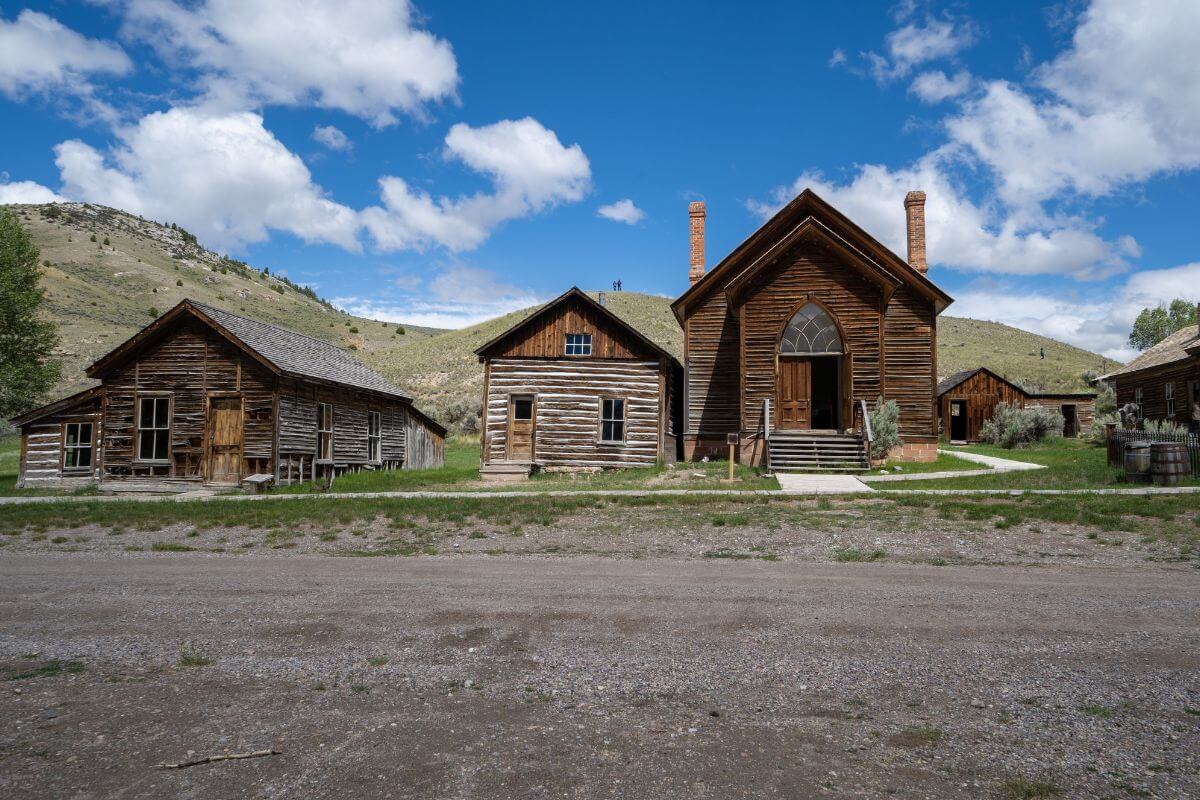
From the moment you set foot in Montana’s oldest urban areas, you’re transported to a bygone era, where time seems to stand still.
Here, every cobblestone and weathered building tells stories of adventurous traders, Native American tribes, and the relentless pursuit of progress.
These remarkable towns epitomize the rich tapestry of Montana’s past and invite you to uncover their endless tales.
1. Town of Stevensville
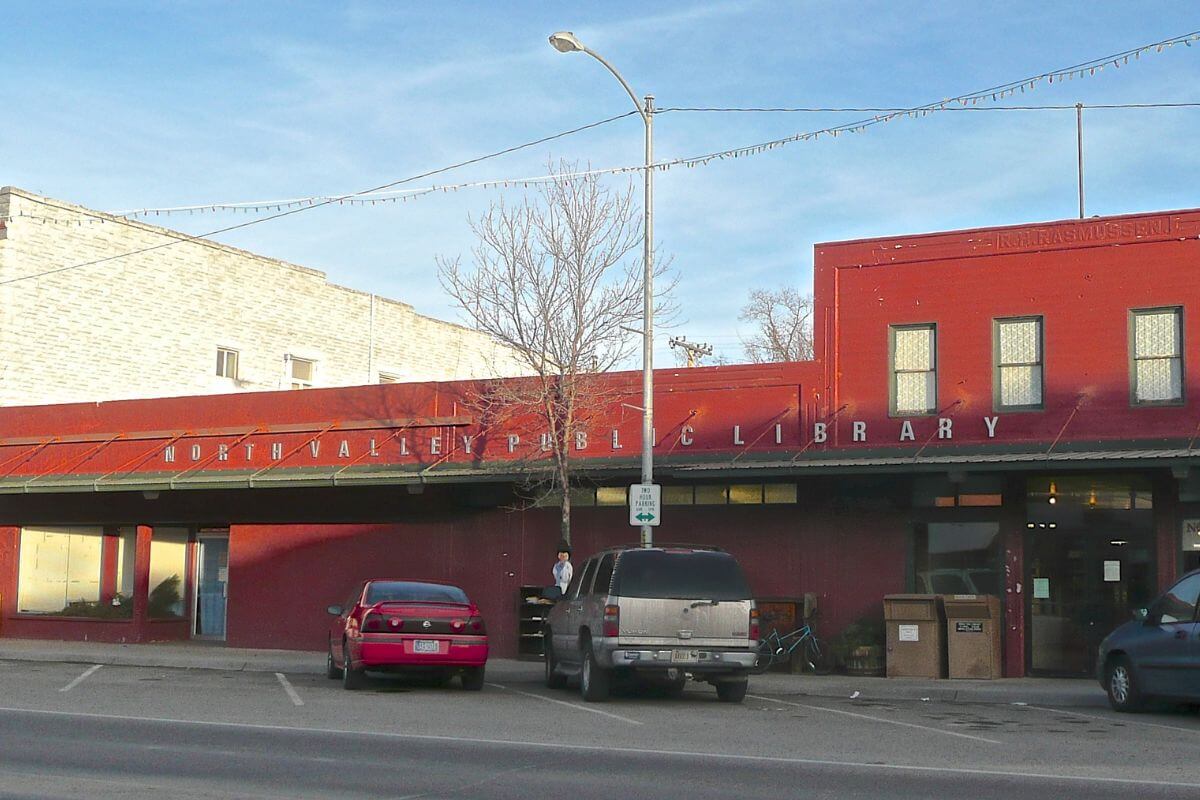
Dubbed “Montana’s oldest town”, the region that later became Stevensville was founded in 1841 by a group of Jesuit missionaries helmed by Father Pierre-Jean De Smet.
It holds another distinction as the first permanent settlement for non-indigenous people in Montana. The town was officially named in 1864 in honor of its territorial governor, Isaac Stevens.
Stevensville’s main historic landmarks are the Saint Mary’s Mission Complex and Bitterroot Family Church, both of which reflect the influence of the town’s early European settlers.
There are also sites across town where historic interactions between the Salish American Indian tribe and Jesuit missionaries remain palpable, with their intertwining legacies.
What truly sets Stevensville apart is its commitment to preserving its historical character. Efforts are primarily directed at the town center, where well-preserved historic buildings stand as silent witnesses to bygone eras.
There is a collective understanding of the value of historical authenticity by the residents, and how important this is to maintain in their town for future generations to marvel at, much like we are doing today.
2. City of Fort Benton
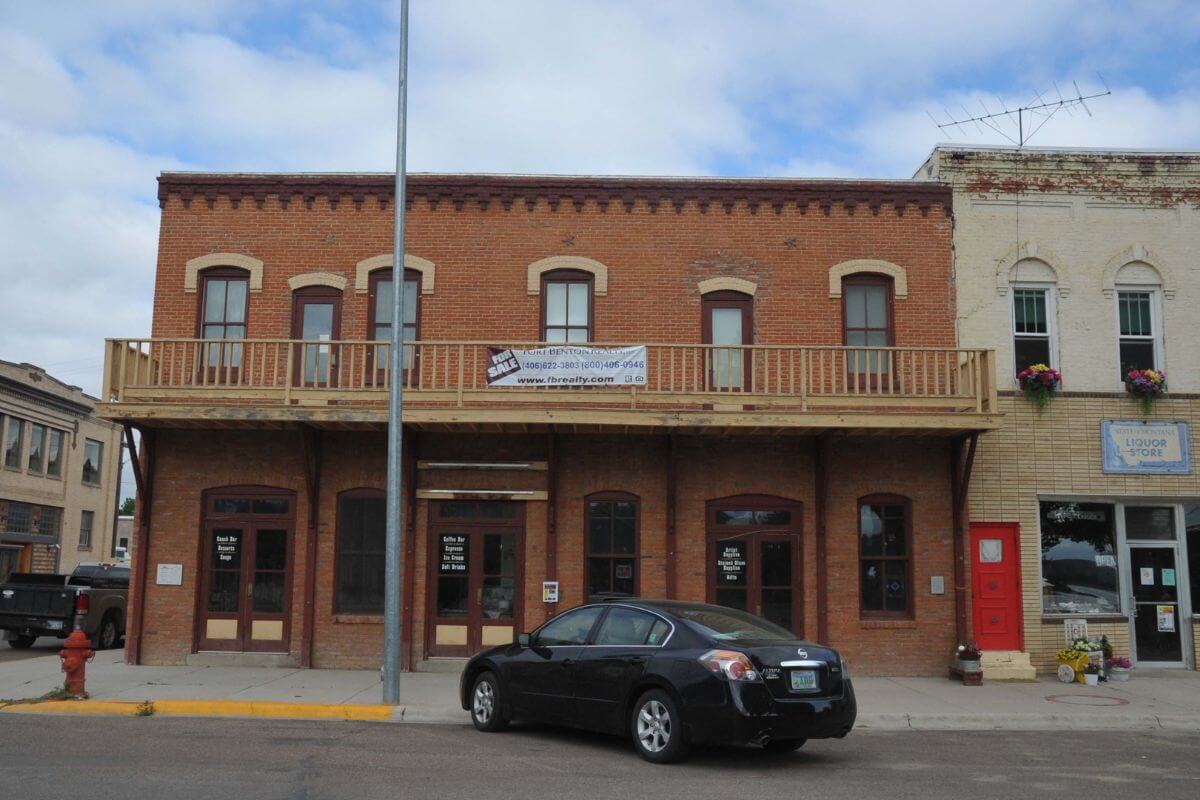
The American Fur Company established Fort Benton as a fur trading post in 1846, cementing its crucial role in developing the American West back in the day.
Fort Benton was designated as a National Historic Landmark District to serve as a testament to the strength and spirit of its pioneers who dared to venture into its once-untamed lands.
Fort Benton’s most well-preserved and iconic buildings are The Old Fort Benton Historic District and the Museum of the Upper Missouri where rich architectural and cultural heritage are brilliantly showcased.
Like many of the places on this list, Fort Benton is committed to preserving its rich historical character.
The residents take great pride in ensuring structures and buildings stand the test of time and serve as a testament to the state’s past and gateways to ensuring its future.
3. Town of Virginia City
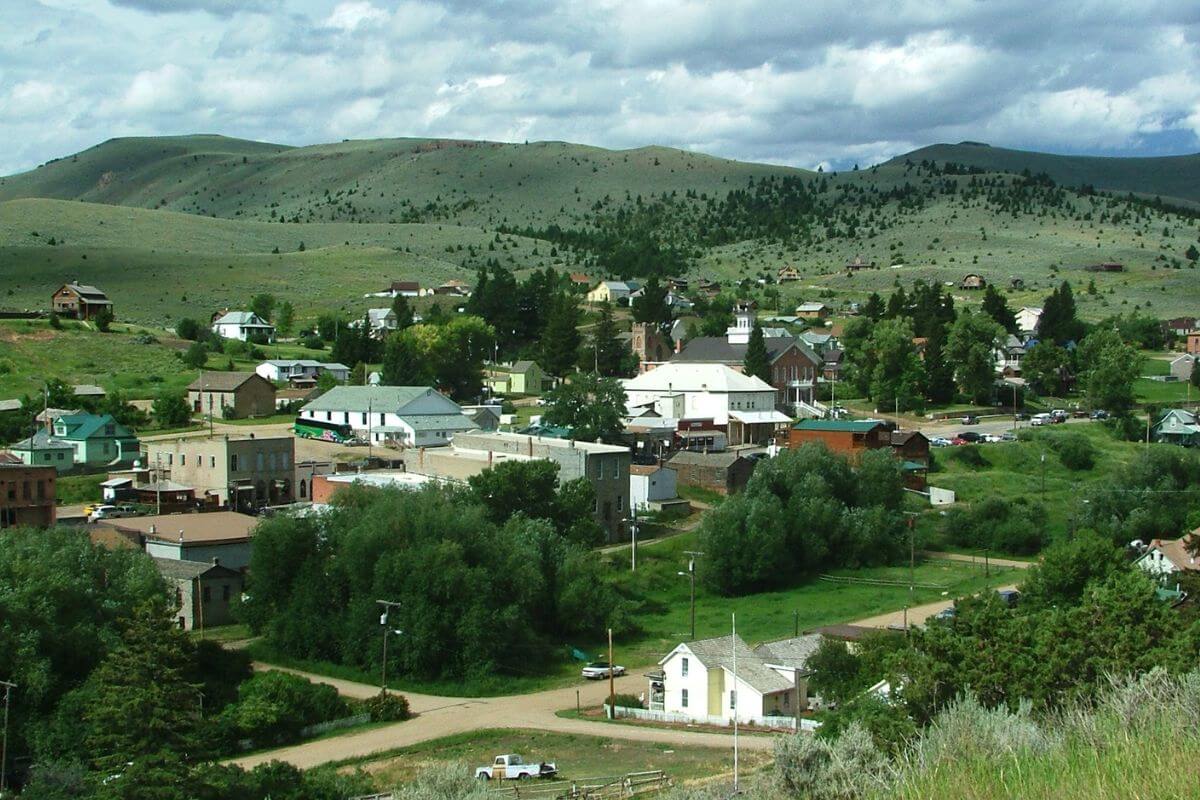
Ever heard of Virginia City? This little gem nestled in the heart of Montana is one of the oldest settlements in the state, with a rich history that dates back to its foundation in 1863 during Montana’s Gold Rush Era.
Picture this: a bustling mining camp that sprang to life after Alder Gulch struck gold. It’s no wonder Virginia City quickly became the territorial capital of Montana from 1865 to 1875.
The efforts to preserve the rich historical character of Virginia City are apparent in its impressive streets that take you back in time and well-preserved historic structures that allow you to immerse in the town’s colorful past.
It’s like stepping into the pioneer era of Montana, with a glimpse into the bustling mining days that defined the region.
The Virginia City National Historic Landmark and Nevada City Museum offer a front-row seat of Montana’s pioneer era while Alder Gulch Short Line Railroad takes you on a scenic adventure across the countryside.
Truly, there’s no shortage of cultural and architectural heritage in this neck of the Montana woods.
And let’s not overlook the legendary Calamity Jane, previously called Virginia City home. Its roots have dug deep into various industries in the town as a testament to its founders.
4. City of Helena
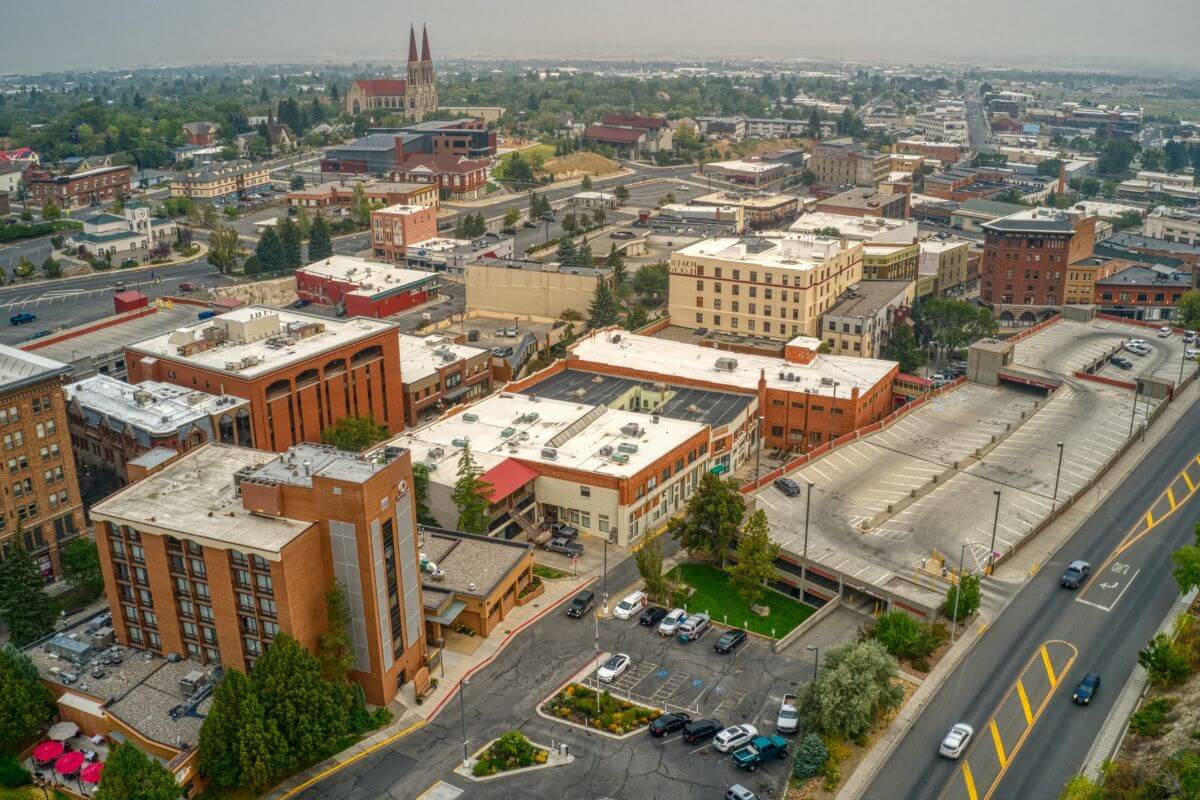
One of Montana’s oldest cities, Helena was named after a feisty lady called Helen during the exhilarating days of the Gold Rush.
Imagine stepping through a time portal to 1864. Prospectors are flocking to Helena hoping to strike gold, as the area emerges as a bustling gold mining camp.
Fast forward to today, and Helena proudly stands as the state capital of Montana.
Don’t let the title of “capital city” fool you, though, because Helena is so much more than bureaucratic buzz. It’s a city alive with history and charm, earning its nickname as the “Queen City of the Rockies.”
Hop aboard the Last Chance Tour Train and take a captivating ride through time, where stories of the gold rush era come to life.
The Broadwater Hot Springs will wash away your worries in case you’re on the lookout for a relaxing sanctuary.
Helena boasts Victorian-era architecture wherever you look, structures that remain as impressive today as they did in the past. Walking along the streets, you feel like you’ve stepped into a time portal to early Helena.
The vibrant arts scene, with galleries, theaters, and museums, puts you right in the thick of its cultural heritage.
And here’s a fun fact about Helena. Did you know that it’s listed on the National Register of Historic Places? That ensures the preservation of its architectural treasures for future generations!
5. City Deer Lodge
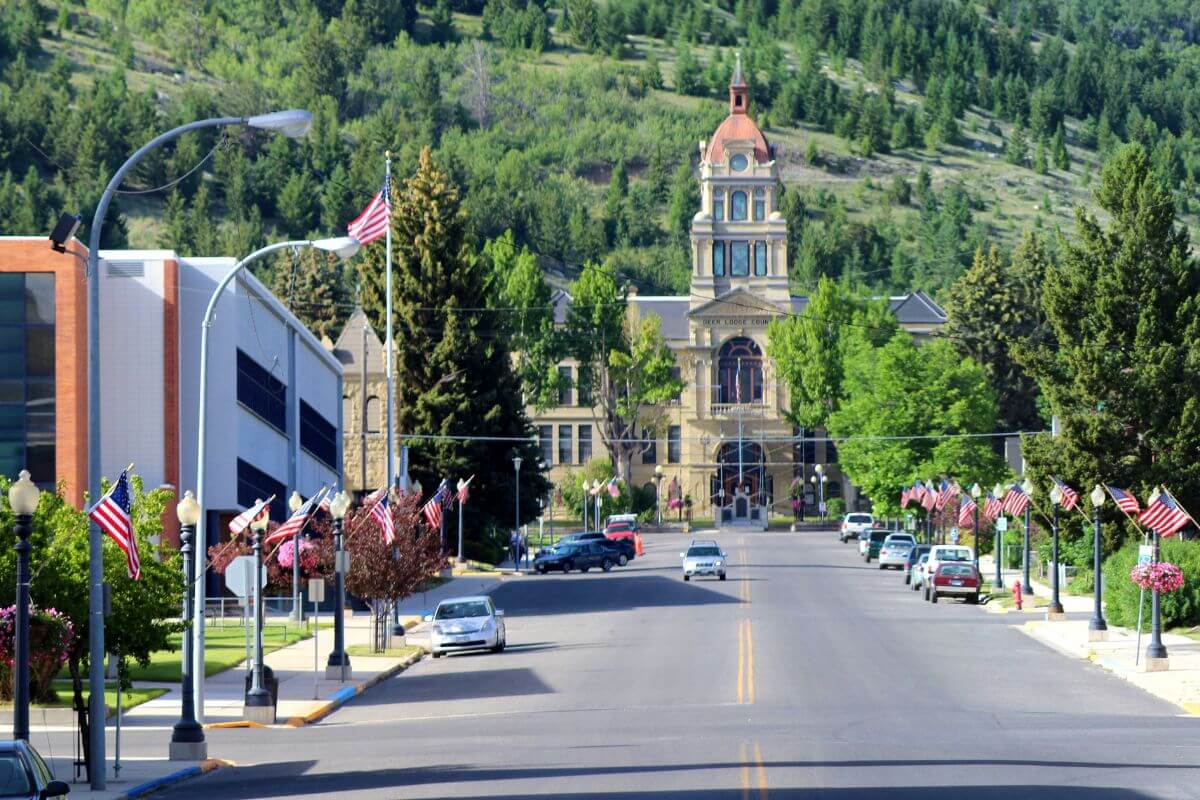
The city of Deer Lodge was established in 1862 as a pioneer settlement. It was later incorporated in 1888, earning its place as one of the oldest cities in the state.
Deer Lodge’s historical significance runs deep. It served as a vital stop along the Mullan Road, an important transportation route during the territorial era, resulting in it being a center for agriculture and mining back then.
Today, Deer Lodge proudly showcases its rich history through its historic landmarks. One such attraction is the Old Montana State Prison, a hauntingly captivating site that offers a glimpse into the darker chapters of the past.
If you’re hungry for more knowledge, the Powell County Museum is a must-visit. There, you’ll uncover fascinating artifacts and stories that paint a vivid picture of Deer Lodge’s storied past.
As the county seat of Deer Lodge County, this city has a unique allure that draws in history buffs and curious explorers alike.
Whether you’re wandering through the streets, admiring the old buildings, or delving into the captivating exhibits, Deer Lodge effortlessly transports you back in time.
6. City of Bozeman
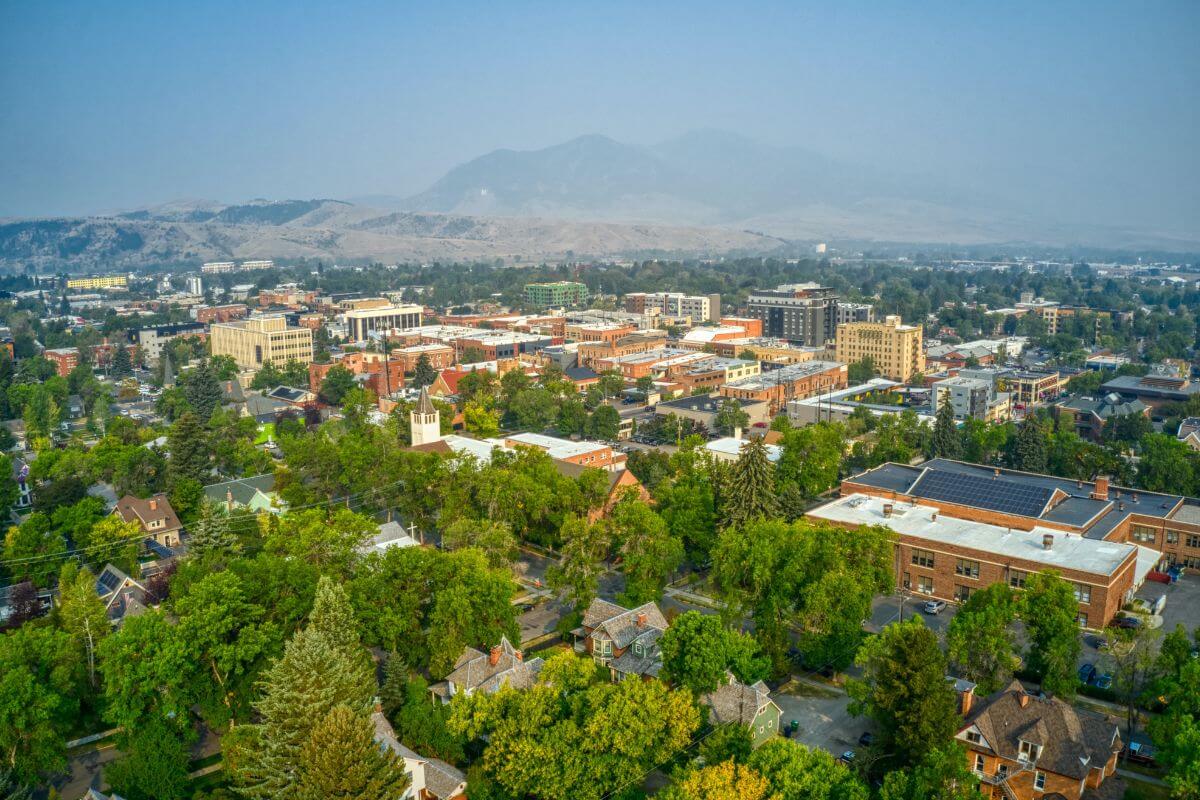
The historically rich city of Bozeman first emerged as a center of trade in the heart of Montana.
It was founded during the Gold Rush Era of 1864 and eventually became one of Montana’s major cities due to the economic opportunities brought on by its rich mineral resources.
One of Bozeman’s prominent features is its esteemed institution, Montana State University. It not only serves as an attraction for learners, but it also blankets the city with a youthful feel.
Situated along the city’s iconic Main Street are quaint shops, charming cafes, and historic buildings that regale us with tales of a bygone era.
John Bozeman, a pioneer, and explorer who played a crucial role in the area’s development, is the city’s namesake.
He established the historic Bozeman Trail, a route that facilitated the movement of goods and people, contributing to the economic growth of the city significantly.
The city also thrived on agriculture, with fertile lands nestled in the picturesque Gallatin Valley nurturing bountiful harvests.
Whether you’re strolling down Main Street, exploring the Montana State University grounds, or simply enjoying the breathtaking landscapes at every turn, Bozeman offers a captivating blend of history and modernity within its surroundings.
7. City of Butte
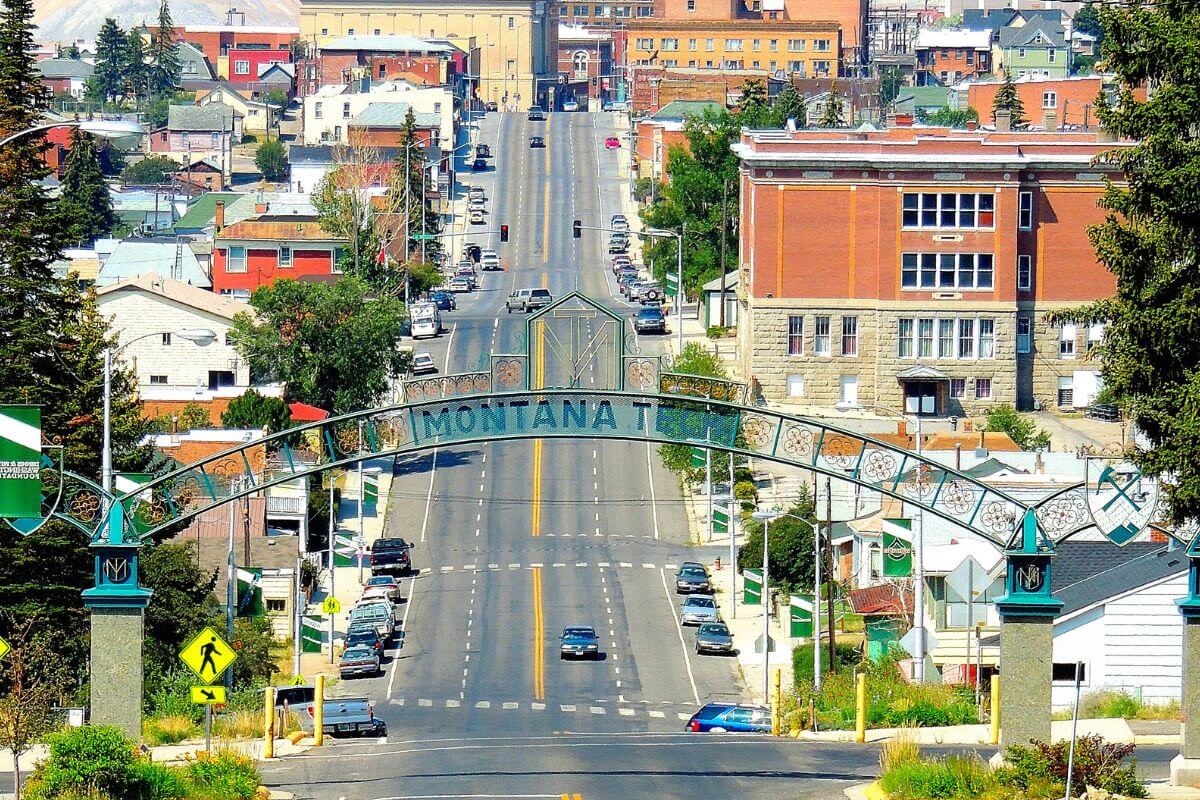
Butte, one of Montana’s oldest cities, is as historically rich and diverse as the precious minerals that lie beneath its surface.
Founded in the 1860s as a mining town, Butte climbed up the industrial ladder to become “The Richest Hill on Earth.”
This story intertwines with the mining industry’s rise and fall. The discovery of gold led to the population boom and economic growth that established a vibrant community.
The deeper the mines went, the more copper became the main focus, which propelled Butte to new heights when it came to the production of the precious metal.
One of the city’s most striking features is the colossal Berkeley Pit, a once open-pit mine that is now a turquoise lake. This serves as a reminder of both the mining legacy and the environmental challenges the town has faced over the years.
Mining history aside, the city also boasts a vibrant culture and architectural beauty.
The city boasts a wealth of historic buildings, ranging from ornate Victorian structures to utilitarian industrial facilities. These architectural gems reflect the different eras and communities that have called Butte home.
Aside from its main historic attractions, Butte is a dynamic city brimming with musical performances and art festivals.
Locals take great pride in their warm hospitality and unique cultural heritage that further add to the city’s charm.
8. City of Missoula
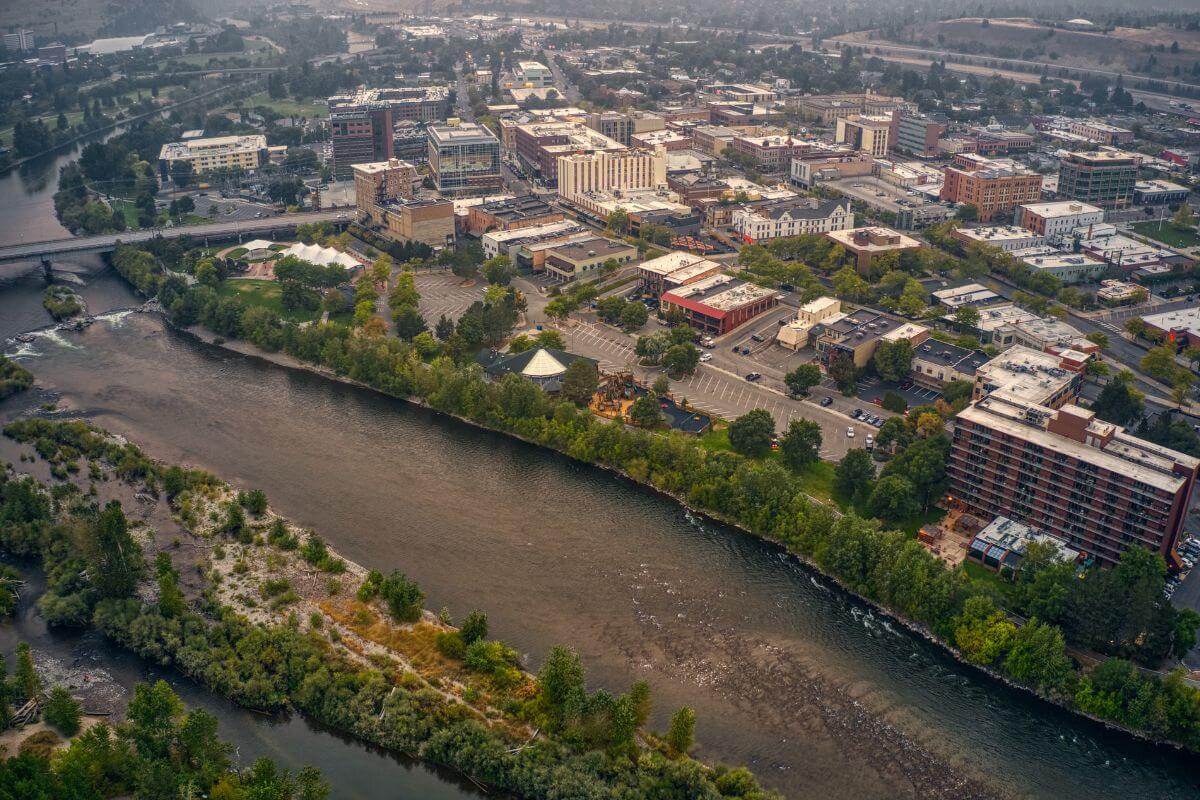
The further we explore Montana, we find that Missoula also has the distinction as one of the state’s oldest cities. This city dates as far back as 1860 when it first became a humble fur trading post.
It evolved and changed over time, eventually becoming the site of Fort Missoula as well as the first university in the state.
Missoula, which is near the meeting point of the Bitterroot and Blackfoot Rivers, has earned the moniker “hub of five valleys.”
Its unique geography, with the Clark Fork and Bitterroot Rivers converging, made it a vital transportation hub in the late 19th century, connecting people and goods across the region.
Beyond its fascinating history, Missoula is a haven for art lovers and culture enthusiasts. The city’s vibrant art scene delights visitors with galleries, theaters, and lively festivals throughout the year.
You can’t help but marvel at how Missoula embraces its past while celebrating its present. The Missoula Downtown Association’s River City Roots Festival is a shining example of this.
This event brings the town alive with music, art, and cultural experiences, beautifully encapsulating Missoula’s rich heritage.
Don’t hesitate to include Missoula in your schedule if you find yourself traveling through Montana. Your sense of wonder will be piqued by this city’s unique combination of history, beauty, and creative vitality.
9. City of Livingston
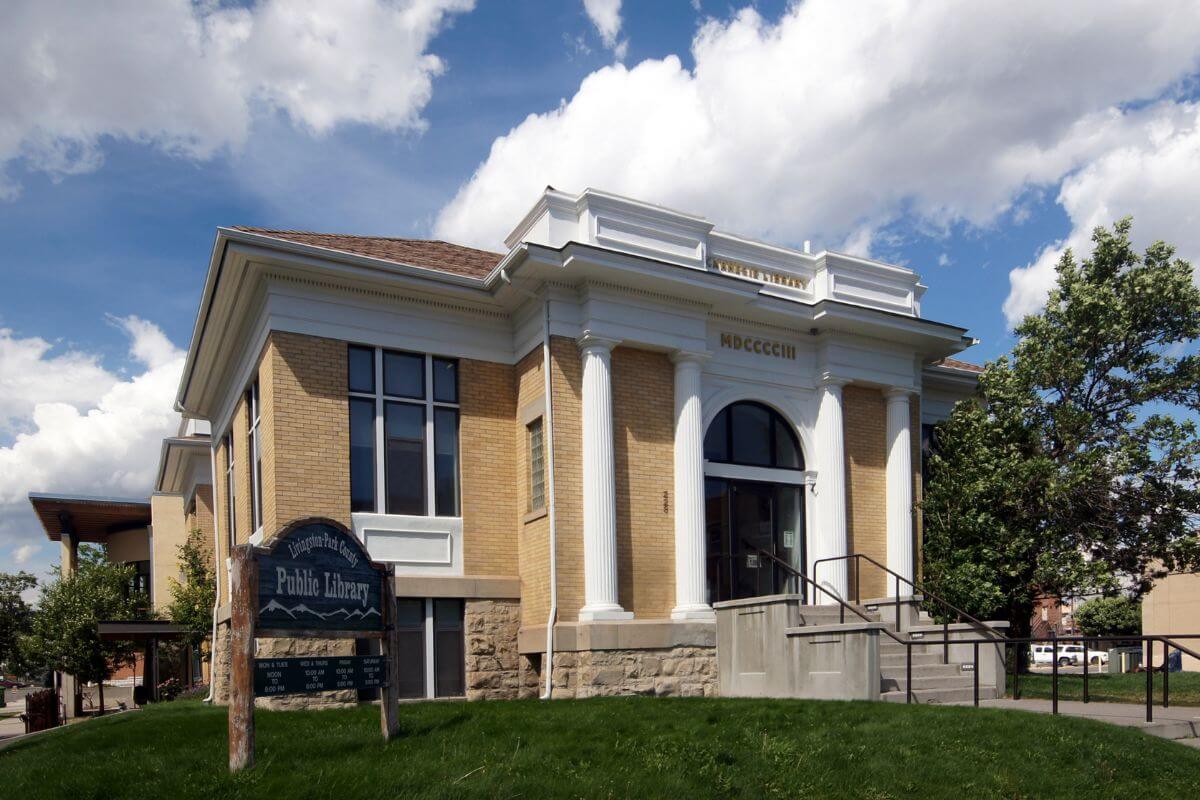
Seated at the center of Montana is the city of Livingston, a charming city that instantly takes you back in time.
Livingstone was established in 1882 and is renowned for its abundance of historically significant architecture, including Victorian-era buildings and stores in the Western style.
But Livingston’s allure extends far beyond its stunning façades.
Its appeal as a must-visit location is heightened by its closeness to Yellowstone National Park, making it a gateway to the first national park in the world.
Livingston, a place where creativity flourishes and the city pulsates with artistic energy, has thriving art galleries, theaters, and museums that all serve as platforms for showcasing its rich cultural legacy.
- Read more about The Legacy of Montana
And if that wasn’t enough, annual events like the Livingston Roundup Rodeo bring a touch of the Wild West to life, celebrating the city’s cowboy roots.
10. City of Great Falls
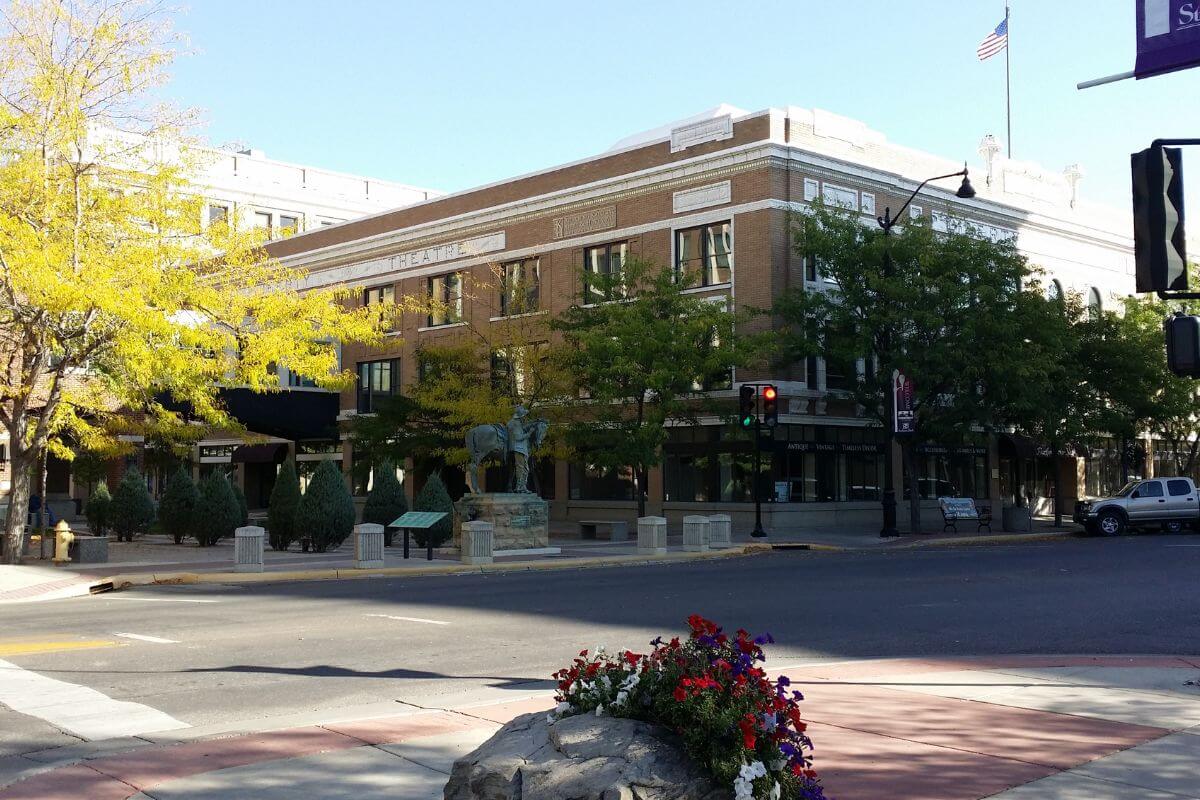
There is no doubt that the streets of Great Falls truly transport you back in time. This remarkable city stands proud as one of Montana’s oldest, its roots deeply intertwined with the rich tapestry of history.
It was the Lewis and Clark expedition that really put Great Falls on the map.
The arduous voyage along the raging Missouri River ended in awe, as explorers marveled at the falls of Great Falls, the city’s namesake. This encounter would prove to be pivotal to the city’s development as a flourishing economic and cultural hub.
The late 19th to early 20th century signified the beginning of an industrial boom, marking the birth of historic dams like the Black Eagle and Rainbow Dams and taking the city of Great Falls to new heights.
Gold was also discovered in the nearby Judith Mountains during this time, attracting a wave of fortune seekers and further contributing to the city’s prosperity.
Beyond its industrial prowess, Great Falls is also renowned for its vibrant cultural events.
The Lewis and Clark Festival and the Montana State Fair provide the city energy while exhibiting its rich history and inviting tourists to take part in its customs.
The historical importance of Great Falls doesn’t stop there. It was crucial for military operations during the Cold War as a strategic site.
There is still an air of mystery and fascination in the community due to its proximity to Malmstrom Air Force Base and reports of UFO encounters.
More than a mere city, Great Falls is a time portal to the past and a symbol of the never-ending spirit of discovery.
11. City of Miles City
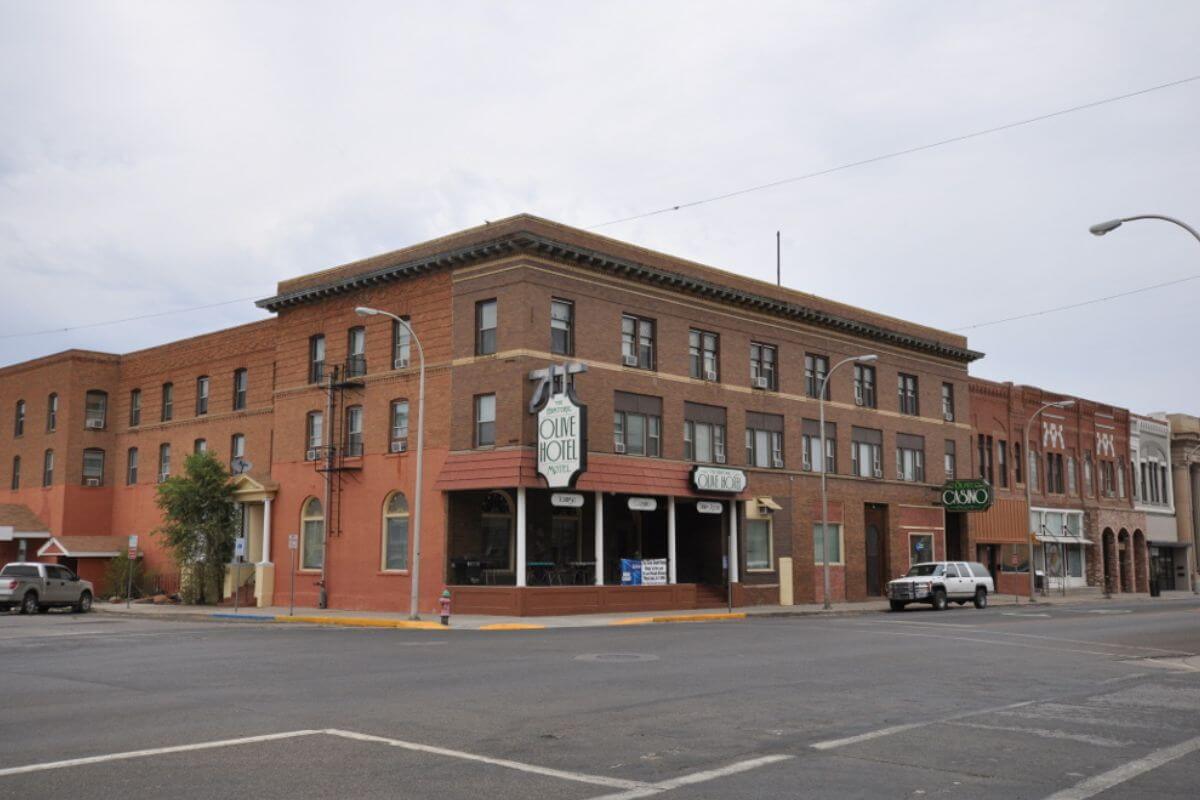
Miles City’s rich historical tapestry can truly leave you in awe.
In addition to being established in 1877 as a modest trading post, Miles City also carries the weight of an important historical event—the Battle of the Little Bighorn.
It was in the aftermath of that fateful battle that Miles City’s story truly began. As the United States Army established forts to keep a watchful eye on the Native American tribes in the region, the town of Miles City emerged as a vital hub.
The Tongue River, which was close by, provided the city with a lifeline, and it flourished as the U.S.’s primary supply hub. army forts, such as the renowned Fort Keogh.
As you walk through its streets today, you may still hear and see remnants of the past. The grand Yellowstone County Courthouse stands as a testament to the city’s enduring history.
The Range Riders Museum offers a glimpse into the vibrant cowboy culture that has shaped the city’s identity. And the many historic homes and commercial buildings, with their sturdy facades, whisper tales of a bygone era.
But it’s not just the past that captivates Miles City; it’s the living, breathing celebration of the present. This city embraces its rich cultural heritage even today, especially when it comes to the Western cowboy and ranching culture.
Every year, the Miles City Bucking Horse Sale electrifies the air, showcasing the wild spirit of the West.
The Eastern Montana Fair brings together locals and visitors alike, immersing them in the vibrant tapestry of life in this remarkable city.
Miles City may have been founded after a historic battle, but it has flourished into a city that pulsates with life and beckons you to experience its Western charm.
Whether you’re captivated by the majestic Yellowstone River or enticed by the lure of cowboy culture, Miles City is an enchanting destination that promises to leave an indelible mark on your heart.
12. City of Billings
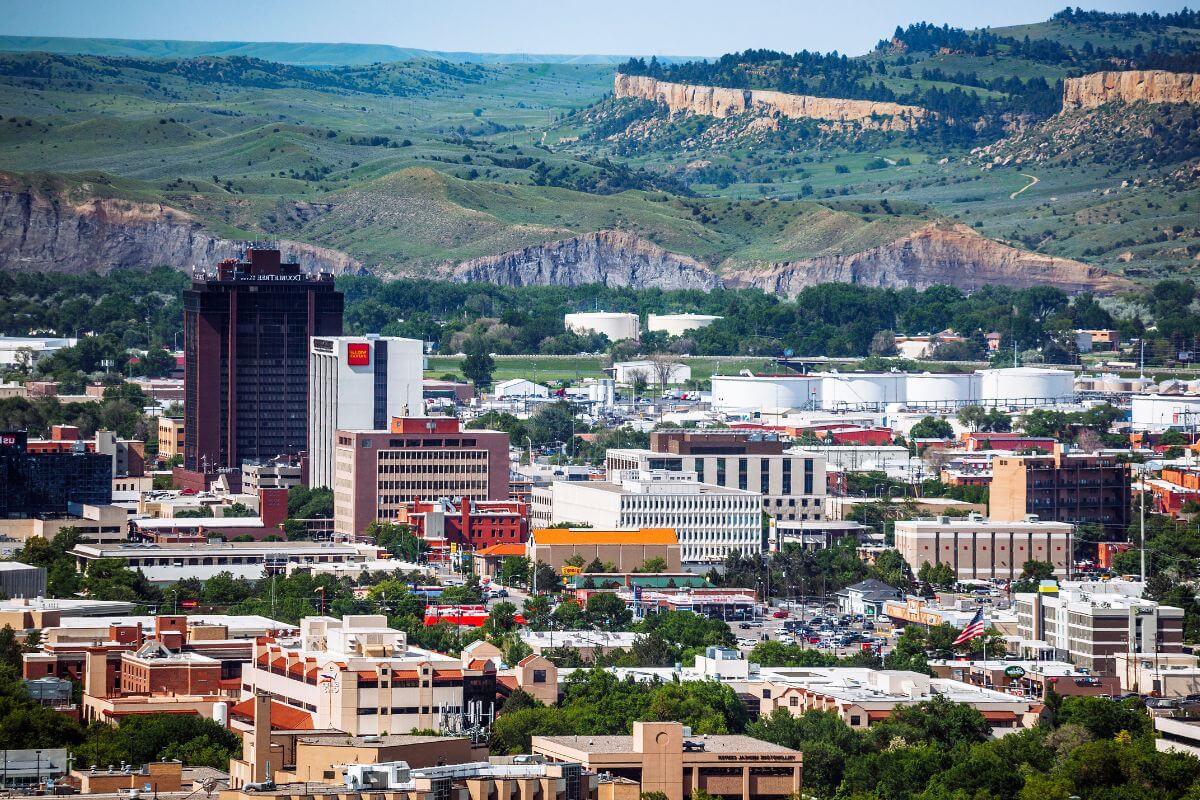
The birth of Billings was marked by the arrival of homesteaders in 1877.
The vibrant city offers a glimpse into the era of the Wild Wild West, where the bustling streets echoed with the sounds of jingling spurs and clattering cowboy boots.
More than a relic of bygone days, Billings is a thriving economic hub that seamlessly blends the past and the present.
Billings boasts the timeless Pictograph Cave where ancient rock art tells fascinating tales of the city’s early indigenous inhabitants. It is home to numerous museums that offer insights into the city’s rich historical character.
A vibrant downtown shopping district lined with charming cafes and quaint bookstores lies in the city’s heart, making it the perfect place to indulge in some much-needed retail therapy.
Billings stands out not only for its rich culture and storied past but also for its inspiring and captivating natural heritage.
If you’re drawn to that allure, this Montana gem is a definite must-visit.
13. City of Kalispell
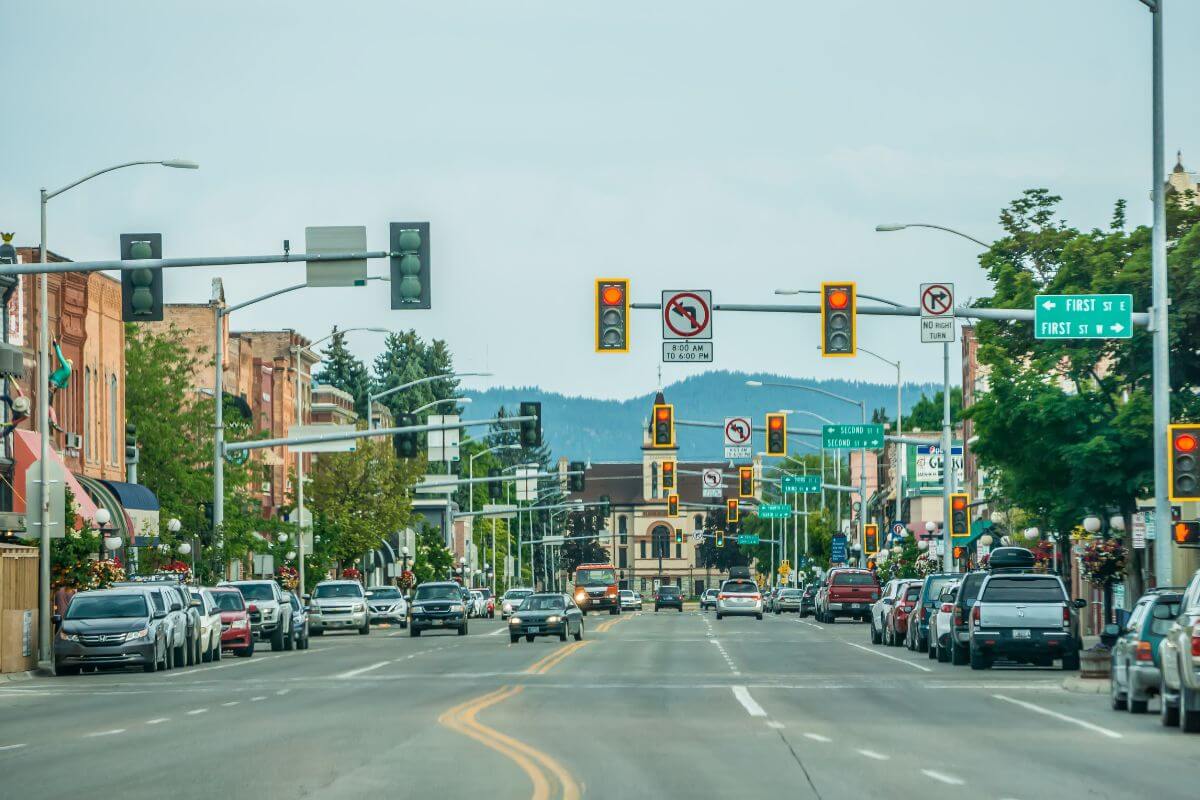
Founded in 1891, Kalispell stands as one of Montana’s earliest settlements, boasting a rich history that can be traced back to the state’s industrial boom in the late 19th century.
Kalispell is situated near the breathtaking Flathead Lake and iconic Glacier National Park, making it a prime location for lovely outdoor recreation and tranquil retreats.
As Northwest Montana’s largest city, Kalispell is beloved by residents and tourists alike. It serves as the county seat and business hub of Flathead County, further adding to its prominence.
Adorning the city’s vibrant downtown area are unique shops, charming cafes, and historic buildings that add to its allure.
Immerse yourself in the beauty of Flathead Lake by walking its breathtaking trails that unveil iconic wildlife and majestic glaciers, ensuring memorable experiences that will leave you in awe.
History and natural beauty come together seamlessly in the city of Kalispell, igniting your curiosity about other treasures Montana’s other settlements may hold. And if this list is any indication, then you won’t be disappointed!
Distinctive Qualities Present in Montana’s Longstanding Localities
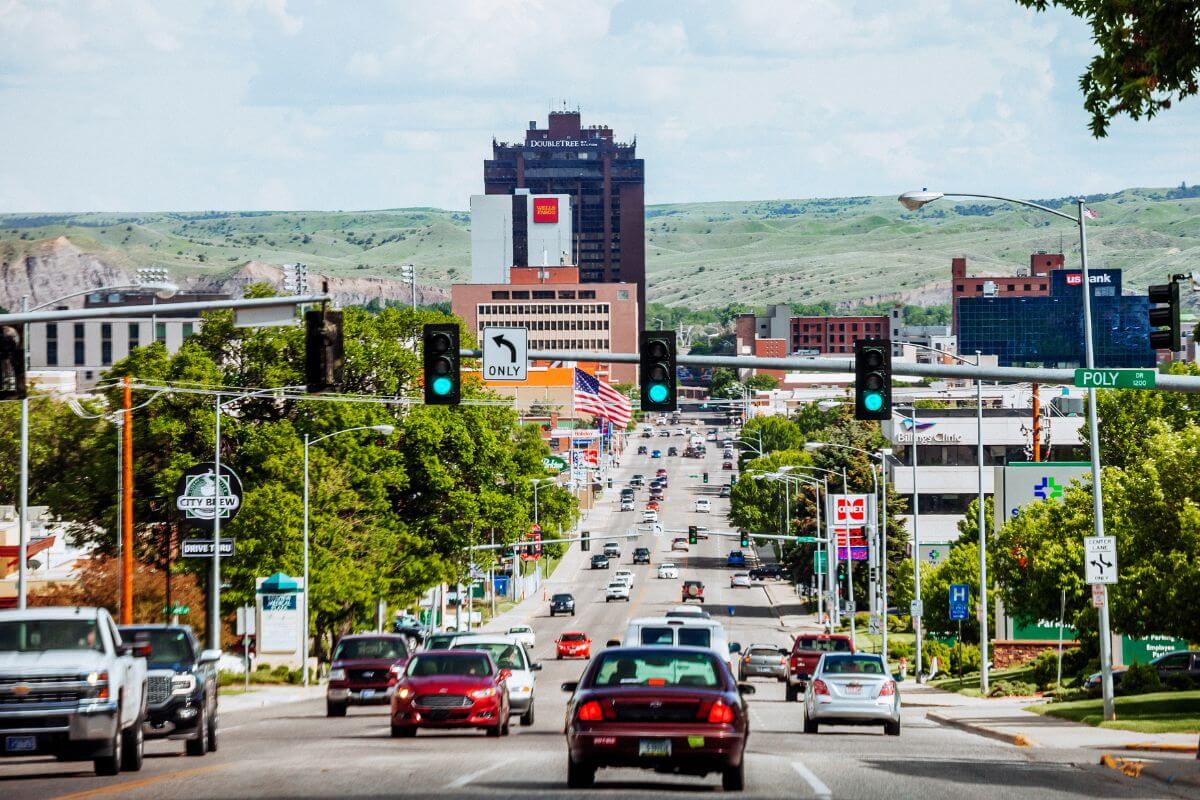
Montana’s oldest cities and towns possess a captivating charm that sets them apart from their modern counterparts.
These communities provide a window into the state’s past and a witness to its lasting spirit thanks to their historical significance and distinctive characteristics.
These cities and towns’ surviving structures and historical sites serve as evidence of their illustrious past.
From the fortresses of Fort Benton and Fort Owen to the iconic architecture of Deer Lodge County’s Anaconda-Deer Lodge County, each structure stands as a testament to the early settlement and development of Montana.
These localities were pivotal to defining the state’s past as well as shaping its present.
Since towns and cities were Montana’s earliest commercial hubs, they became prime sites for economic activity and cross-cultural relations.
In addition to their historical significance, these localities also boast vibrant arts scenes, influenced by their rich heritage.
From the Bitterroot Valley’s Bitterroot Family Church to the theaters and galleries of major port cities like Missoula, each locality showcases a unique blend of tradition and creativity.
Montana’s oldest cities and towns are a true treasure trove, offering a glimpse into the state’s history, distinctive architecture, and vibrant cultural scene.
Whether exploring the historic buildings of Fort Benton or immersing in the art scene of Missoula, these localities captivate with their unique qualities and enchanting past.
Why Preserving Montana’s Historic Urban Centers Matter
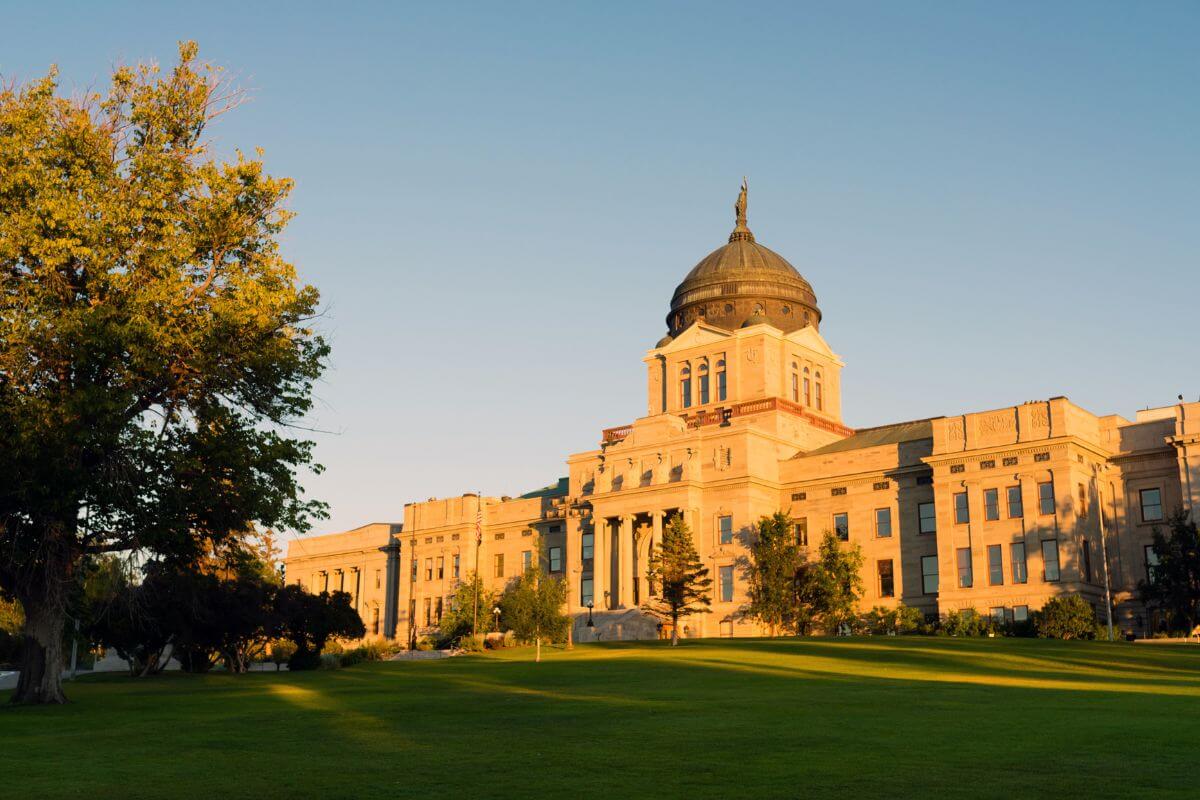
Preserving Montana’s historic urban centers is of utmost importance due to its rich history and cultural significance. These cities and towns have witnessed the growth and development of the state, leaving behind tangible reminders of the past.
Here are a few reasons why preserving Montana’s historic urban centers matters:
- Economic Benefits – These urban centers attract tourists and visitors, stimulating local economies and creating job opportunities. Historical sites and landmarks are magnets for travelers seeking authentic experiences and unique cultural encounters.
- Cultural Heritage – These centers are literal museum artifacts, embedded with tales and traditions of the past. They serve as the people’s link to their roots, allowing them to understand why they are who they are.
- Sense of Place and Community – Historic urban centers provide people with a sense of pride and belongingness. They anchor people to a community through shared history and social cohesion among residents.
- Education and Cultural Tourism – As living museums, preserved urban centers are valuable education resources. They provide locals and visitors alike with reliable information about Montana’s past. This way, people can better understand the triumphs and struggles of those who came before them.
Montana’s Oldest Towns and Cities Final Thoughts
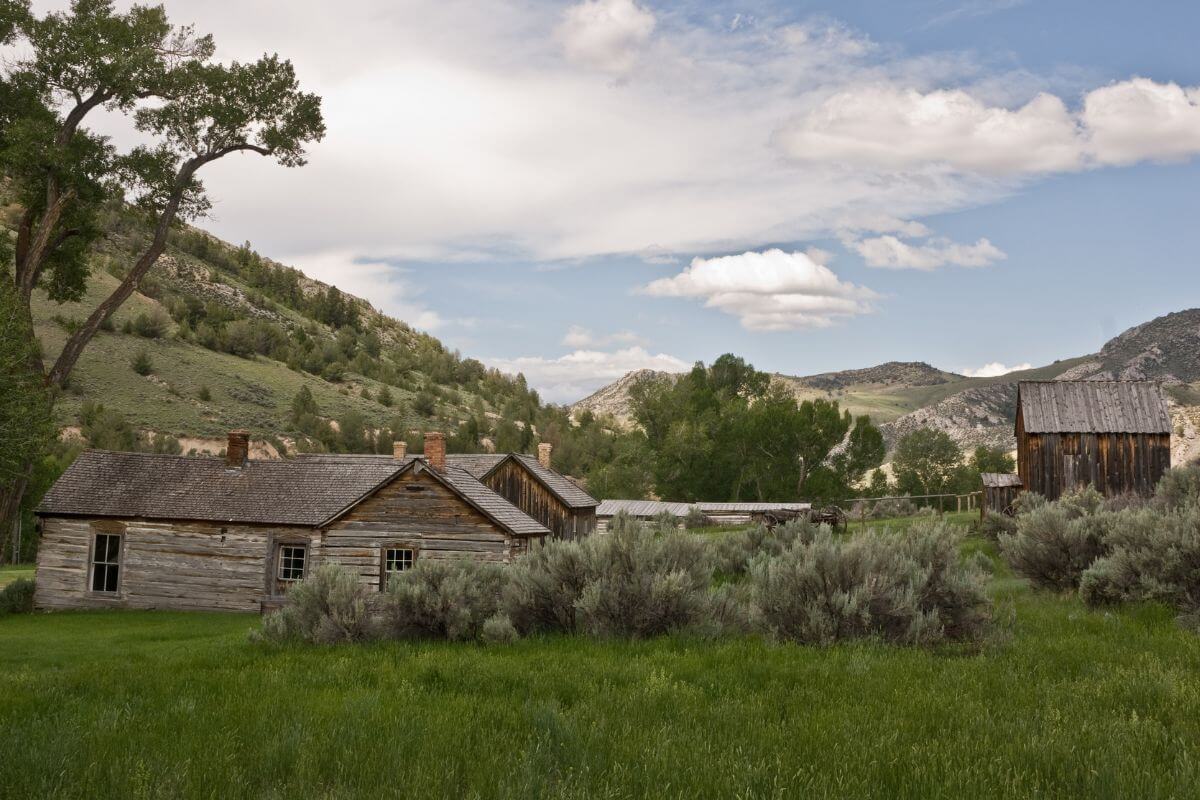
Montana’s oldest towns and cities are not just dots on a map; they are living testaments to the past, showcasing the diverse and intertwined stories of the people who have shaped this beautiful state.
From Stevensville and Helena to Fort Benton and Bozeman, each place has a unique story to tell and brings distinct contributions to Montana’s rich historical character.
Preserving municipalities is of utmost importance. Not only are they windows to the past, but they also bring significant economic benefits to the state through various industries, particularly education, and tourism.
The oldest towns and cities in Montana are historical landmarks, and we should value them by ensuring their preservation for both present and future generations.
Montana’s Oldest Towns and Cities FAQs
1. What Was the First Town Settled in Montana?
The first town settled in Montana was Stevensville. This historic town played a crucial role in the state’s early history, serving as the foundation for future settlements.
Stevensville was home to St. Mary’s Mission, the first permanent European settlement in Montana, which provided a vital meeting point for Native Americans, fur traders, and settlers.
2. How Old Is the State of Montana?
Montana was proclaimed a state in 1889, making it nearly 135 years old at the time of writing. Before its statehood, Montana spent 25 years as Montana Territory, from 1864 to 1889.
It is remarkable to think of the countless stories embedded in the land, the spirits of indigenous peoples and non-indigenous settlers woven into its fabric.
3. What Is Stevensville Montana Known For?
The earliest non-indigenous permanent community in Montana, Stevensville is known for its historical significance.
Stevensville is known for St. Mary’s Mission, which was established by Jesuit missionaries in 1841. It stands out even among the state’s historic settlements since its founding paved the way for other towns and cities to grow and develop.
4. What Is the Lost Town in Montana?
Virginia City is known as the “Lost Town” in Montana. This historic town holds immense historical significance as it was once a bustling gold rush town during the 1860s.
Today, Virginia City stands as a preserved time capsule of the Old West, with its well-preserved buildings and streets offering visitors a glimpse into Montana’s rich history.
5. What Is the Oldest Ghost Town in Montana?
Bannack is the oldest ghost town in Montana, with a historical significance that stretches back to the earliest settlements in the state.
Following the finding of gold in Grasshopper Creek, Bannack was established in 1862 and soon attracted thousands of miners looking for their big break. For a brief time, it even served as Montana’s first territorial capital.
If you want to discover more of Montana, don’t hesitate to immerse yourself in these captivating reads:
- Montana Launch Locations
- Armed Forces Sites in Montana
- Serial Homicides in Montana
- Montana Correctional History
- Frosty 1886 Montana Winter
- https://mt.gov/discover/brief_history.aspx
- https://mhs.mt.gov/education/Elementary/HistoryOfOurHome
- https://www.umt.edu/this-is-montana/columns/stories/montana_regions_2of3.php
- https://www.billingsmt.gov/360/History
- https://www.nps.gov/places/the-falls-of-great-falls.htm
- https://commons.wikimedia.org/wiki/File:North_Valley_Public_Library
- https://commons.wikimedia.org/wiki/File:FORT_BENTON_HISTORIC_DISTRICT
- https://commons.wikimedia.org/wiki/File:Virginia_City,_Montana
- https://commons.wikimedia.org/wiki/File:Deer_Lodge_County_(Mt)
- https://commons.wikimedia.org/wiki/File:Butte,Montana
- https://commons.wikimedia.org/wiki/File:Great_Falls,MT
- https://commons.wikimedia.org/wiki/File:MilesCityMT_OliveHotel

